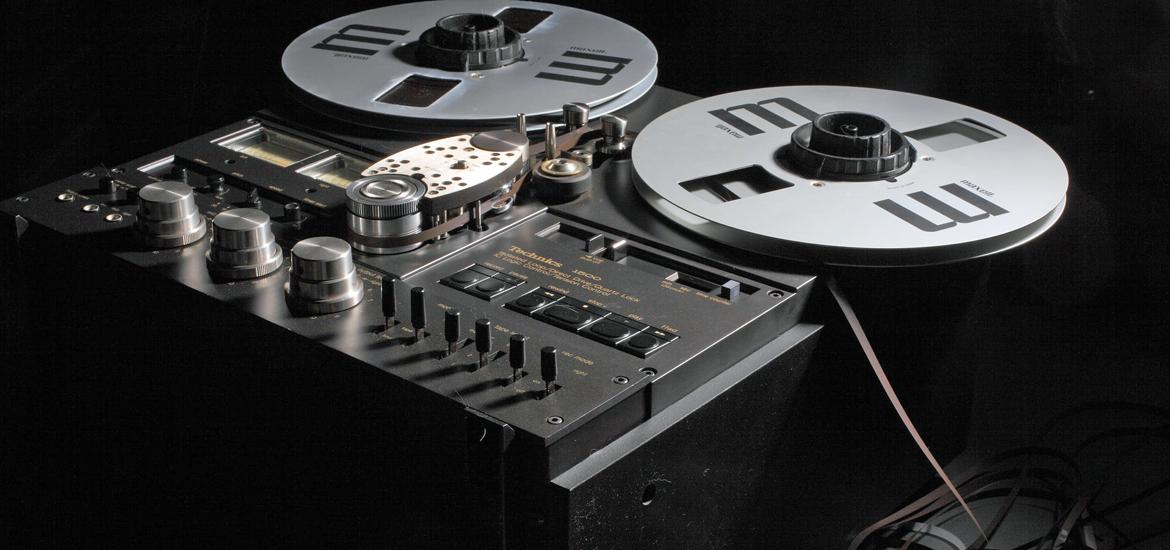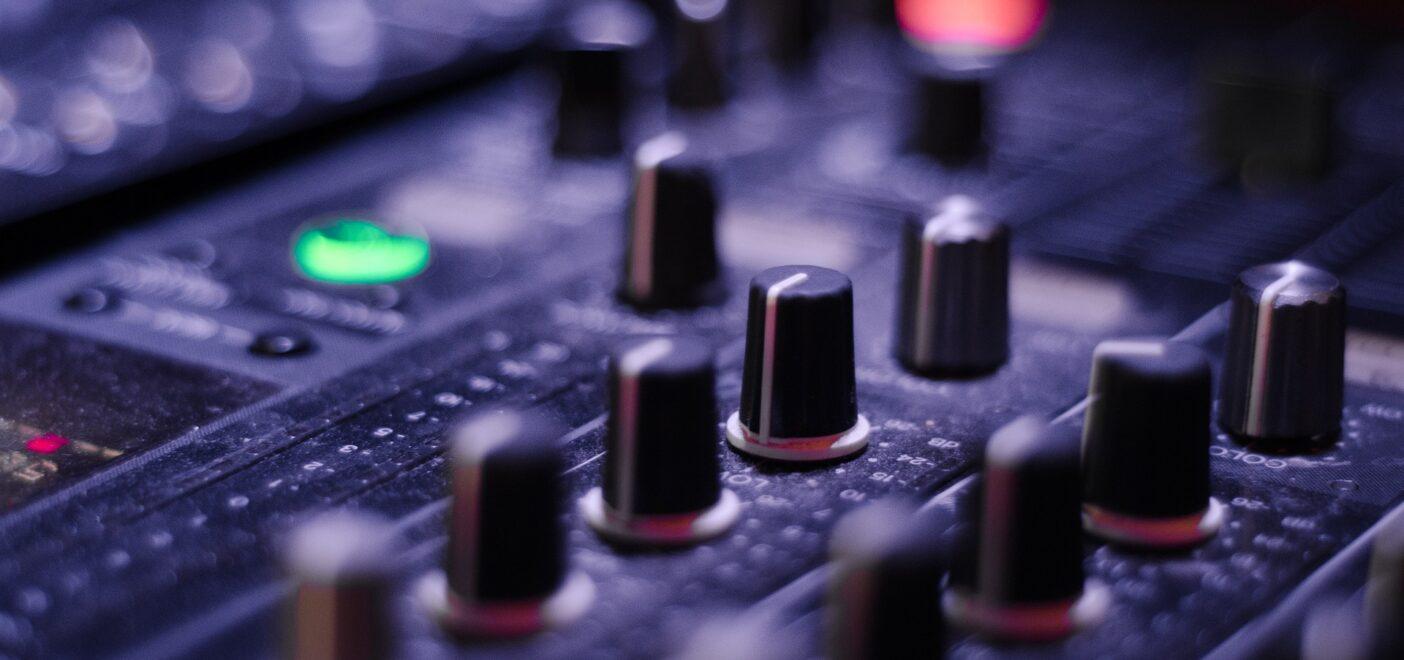Reverb is one of the most important effects in audio production, used across virtually all genres of music, film, and even game audio. It can make sounds larger than life or simply provide a subtle sense of space that keeps a mix from feeling flat and “in your face.” From the lush swell of a concert hall to the intimate depth of a small chamber, reverb weaves a sonic tapestry that brings recordings to life.
While reverb might appear simple on the surface, just a trailing echo after the main sound, its nuances are rich and varied. Producers and engineers use it to place instruments in a shared space, create distance, add emotional weight, or conjure entire sonic landscapes that don’t exist in the natural world. This article will break down what reverb is, how it differs from echo, how it sounds, the key roles it plays in music production, and ways you can harness it to make your mixes shine. We will also explore different reverb types, guidelines for choosing and shaping them, and emerging innovations that expand reverb’s creative possibilities.
Table of Contents
- What is Reverb?
- What Does the Reverb Effect Do?
- How to use Reverb
- Which Instruments Usually Need Reverb and How to Add It
- What Is the Difference Between ‘Echo’ & ‘Reverb’?
- Different Reverbs Types and Their Uses
- Convolution vs. Algorithmic Reverb
- Putting It All Together
- Conclusion
What is Reverb?
Reverb, short for reverberation, is the natural or simulated decay of sound in a physical or virtual environment after the sound source stops producing it. When you clap your hands in a large empty church, the prolonged wash of sound that follows is reverb. When you sing in your tiled bathroom and hear your voice linger and bounce around the space. Essentially, it is the cumulative effect of countless small echoes—the reflections of a sound that bounce between surfaces (walls, floors, ceilings, even objects) and gradually blend into a smooth tail.
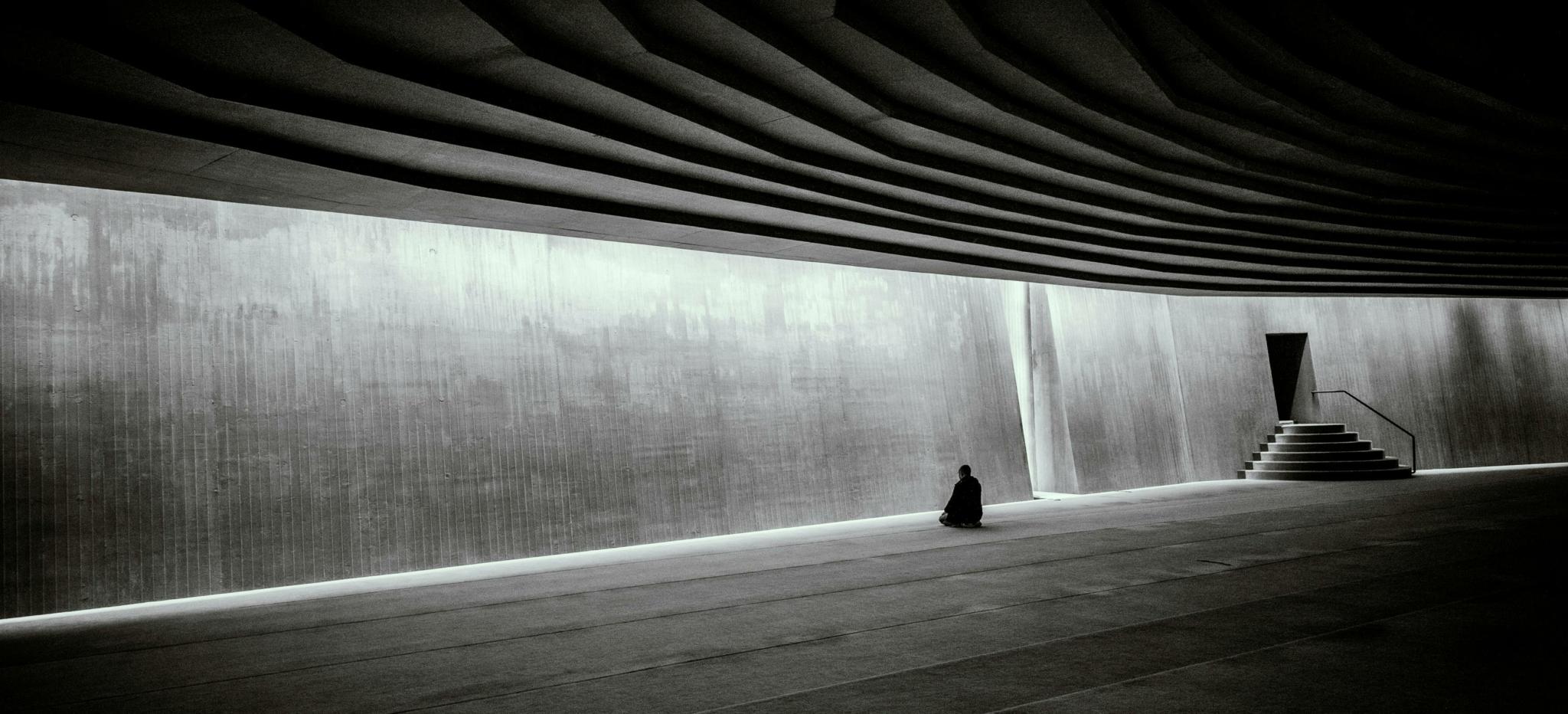
The Core Principle of Reverberation
Any time sound radiates from a source, it travels outward until it encounters surfaces. A portion of that sound may be absorbed, another portion may be transmitted through the material, but a significant part is reflected back. As you hear these reflected sounds arrive at your ear, there is a complex overlap of many reflections, with slightly different timings and intensities. At first, you might identify a few discrete bounces known as early reflections, but as the reflections multiply and get denser, they merge into the continuous decay we call reverb.
Natural vs. Artificial
In a real acoustic space—like a concert hall, cathedral, or bedroom—this process happens organically. In music production, however, we often rely on artificial reverb. This can be achieved through hardware like spring and plate reverb units (which use physical metal springs or plates to simulate the effect) or via digital algorithms that model different types of spaces. Modern producers also use convolution reverb, which captures the specific signature of a real room (or any acoustic environment) through an impulse response, allowing them to virtually place a recording in that actual space.
What Does the Reverb Effect Do?
Reverb adds a sense of space, depth, and dimension to sounds that are otherwise recorded or produced in isolation. In everyday life, most sounds we hear carry some natural reverb because they reflect off surfaces. When you record instruments in very dry, controlled rooms, the results can sound overly direct or “in your face.” Reverb counters that dryness by simulating reflections that imply the instrument is in a real-world environment.
Creates Spatial Illusion
One of reverb’s primary functions is to place a sound in a certain environment—small or big, intimate or vast. By adjusting reverb parameters, you can make a vocal feel like it’s inches from the listener’s ear, or transform it to sound distant in a large chamber. This spatial illusion helps separate different instruments in a mix and lets you build a three-dimensional sonic picture.
Provides Depth and Distance
Increasing reverb typically pushes the source farther back in the mix. When something is drowned in reverb, we perceive it as more distant or behind other elements. Conversely, suggests proximity. This front-to-back layering is crucial in orchestral arrangements or any style where you have multiple instruments and want to create an immersive landscape.

Adds Tonal Richness
The reflections generated by reverb often fill out the body of a sound. A vocal might gain warmth or a slight shimmer depending on the reverb’s frequency response. A snare drum can have a richer “thwack” and tail if paired with the right reverb. Even a sparse guitar line can feel more emotional with a tasteful reverb tail, giving notes a sustaining, lingering quality.
Glues Elements Together
Applying a consistent reverb (like a single room or chamber) to several instruments can unify them, making it sound like they’re all playing in one acoustic setting. This can bring coherence to a multi-track recording where each instrument might have been tracked separately.
Creates an Emotional or Aesthetic
Beyond realism, reverb can be an artistic effect. Overly long, haunting tails might be used in ambient or cinematic music. Gated reverb on drums can produce that punchy 1980s sound vibes. A bright plate reverb can lend a vintage shimmer to vocals. The creative possibilities are endless, and each choice influences the emotional tone of the track.
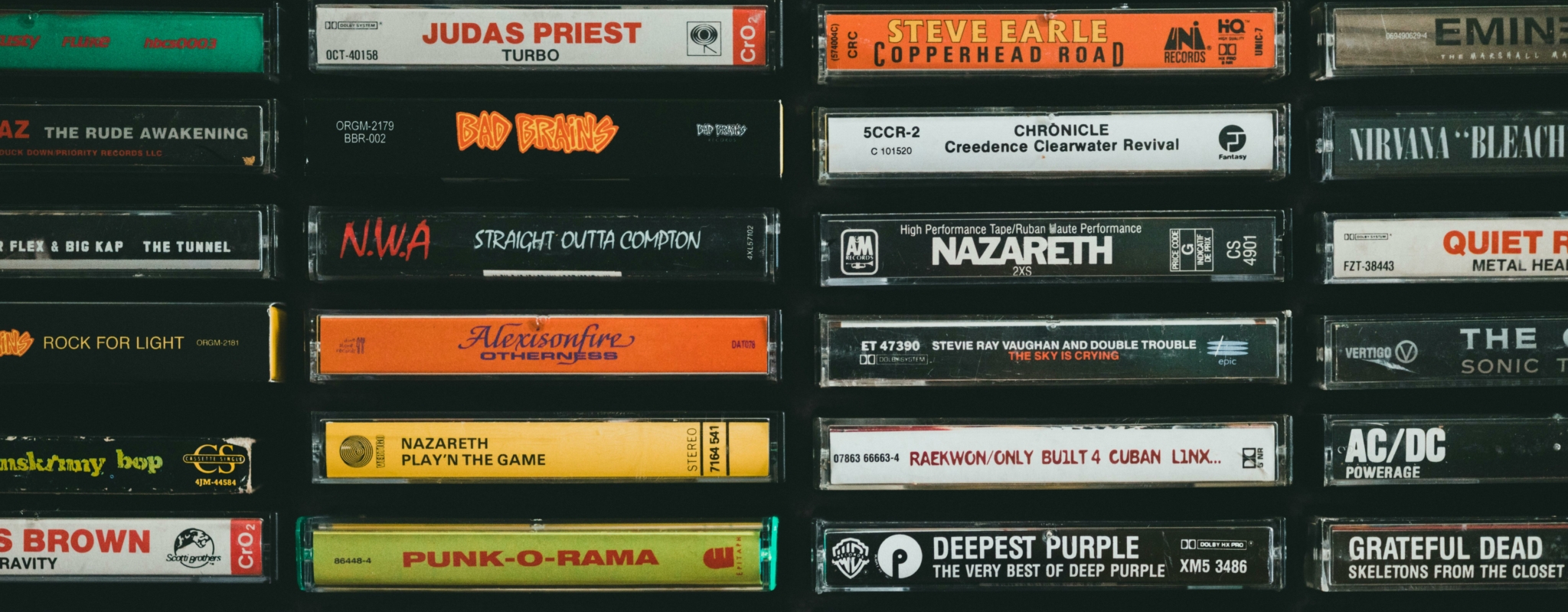
How to use Reverb
In music production is applied in many ways—from subtle techniques that add coherence to more dramatic methods that define a track’s unique character. Below is a comprehensive look at the methods, types, and best practices producers use to get the most out of reverb.
Auxiliary Sends vs. Inserts
Aux Sends: Typically, you place a plugin on an auxiliary (return) channel and send multiple tracks to it. This approach:
- Conserves CPU (one reverb instance vs. many).
- Creates a shared sense of space for different instruments.
- Allows you to blend in just the right amount of reverb for each track using a send fader.
Inserts: Sometimes you insert a reverb directly on a track if you want a specific, unique effect (e.g., a heavily processed or automated reverb just for one instrument). You’d control the wet/dry balance within the plugin itself.

Setting Decay Time
The decay time is the backbone of the effect:
- Short Decay (under 1 second): Good for fast, dense mixes where you just need a hint of space without washing out transients.
- Medium Decay (1–2 seconds): Common for general vocal use, pop mixes, or typical band recordings where clarity and space are both important.
- Long Decay (2+ seconds): Ideal for cinematic, ambient, or ballad scenarios where you want a lush tail that lingers.
Always judge decay time in the context of the song’s tempo and arrangement density. A busy track can quickly get cluttered by a long reverb; a sparse, slow piece might feel more emotional with a bigger, longer tail.
Pre-Delay for Clarity
Pre-delay is a short delay before the reverb tail begins. By inserting, for example, a 20–40 ms pre-delay on a vocal reverb, you allow the initial consonants and transients to come through clearly before the wash kicks in. This technique maintains intelligibility while still providing depth.
EQ and Damping
Reverb can muddy a mix if it accumulates too many low-mid frequencies or has excessive high-frequency content. Most reverb plugins offer damping controls or built-in EQ to shape the tail:
- High-pass filtering the reverb return removes rumble or low-end buildup.
- Low-pass filtering or gentle shelving can prevent harshness in the upper frequencies.
- Damping parameters control how quickly lows or highs decay, tailoring the overall tonal color of the reverb.

Balancing Wet/Dry Signals
A good rule of thumb: raise the reverb level until you clearly notice it, then back it off slightly so it blends. Exceptions arise when you want a big, noticeable effect (like a sweeping, ethereal vocal in a bridge). In general, subtlety is often the path to a polished mix. You can also automate reverb sends so that certain phrases or notes receive extra emphasis.
Using Multiple Reverbs
In many professional mixes, it’s common to have more than one reverb:
- A short “room” reverb for overall ambience or a tight sense of space.
- A longer reverb—plate or hall—for select instruments that need a more pronounced tail.
This layering creates more complex reflections without one single, having to cover every sonic role. It also imitates how real environments have both immediate and more distant reflections.
Which Instruments Usually Need Reverb and How to Add It
Reverb is integral to shaping how each instrument occupies space within a mix. From lending an emotional quality to a vocal line to adding drama to a drum hit, the right reverb choice can blend individual instruments into a cohesive whole, while still preserving their distinct characters. Below, we’ll examine the typical scenarios in which reverb is especially effective, and explore the methods that can bring each instrument to life.
Vocals
Vocals often benefit from short reverbs or rooms when a subtle ambient touch is required, keeping the performance intimate without sounding too dry. In contrast, a longer hall or plate reverb can give the voice a lush, dramatic tail, although it’s important to apply it judiciously in dense mixes to prevent losing clarity. For added control, experimenting with 20–40 ms of pre-delay allows consonants to pierce through before the tail gradually swells, retaining definition even amidst heavier reverbs.
Drums
Drums, particularly snares, can achieve a cohesive room sound through the use of reverb that imitates a real studio space. A simple room reverb can glue an entire kit together, while a gated reverb—often associated with that iconic 80s sound—adds a sharper, more abrupt character to a snare’s decay, making it pop in rock or retro pop contexts. Plate reverb can also work wonders on snare and toms, thickening their presence and giving them a timeless sheen rooted in classic studio techniques.
Electric Guitars
Electric guitars might call for spring reverb if you’re aiming for a surf-rock vibe or any vintage aesthetic that needs a slightly “boingy” quality. Hall or plate reverb is often a solid choice for solos, adding spaciousness without drowning out the guitar’s central melodic function. Rolling off low frequencies in the reverb tail helps ensure the overall mix remains free of muddy buildup, allowing the guitar’s midrange or highs to shine through clearly.
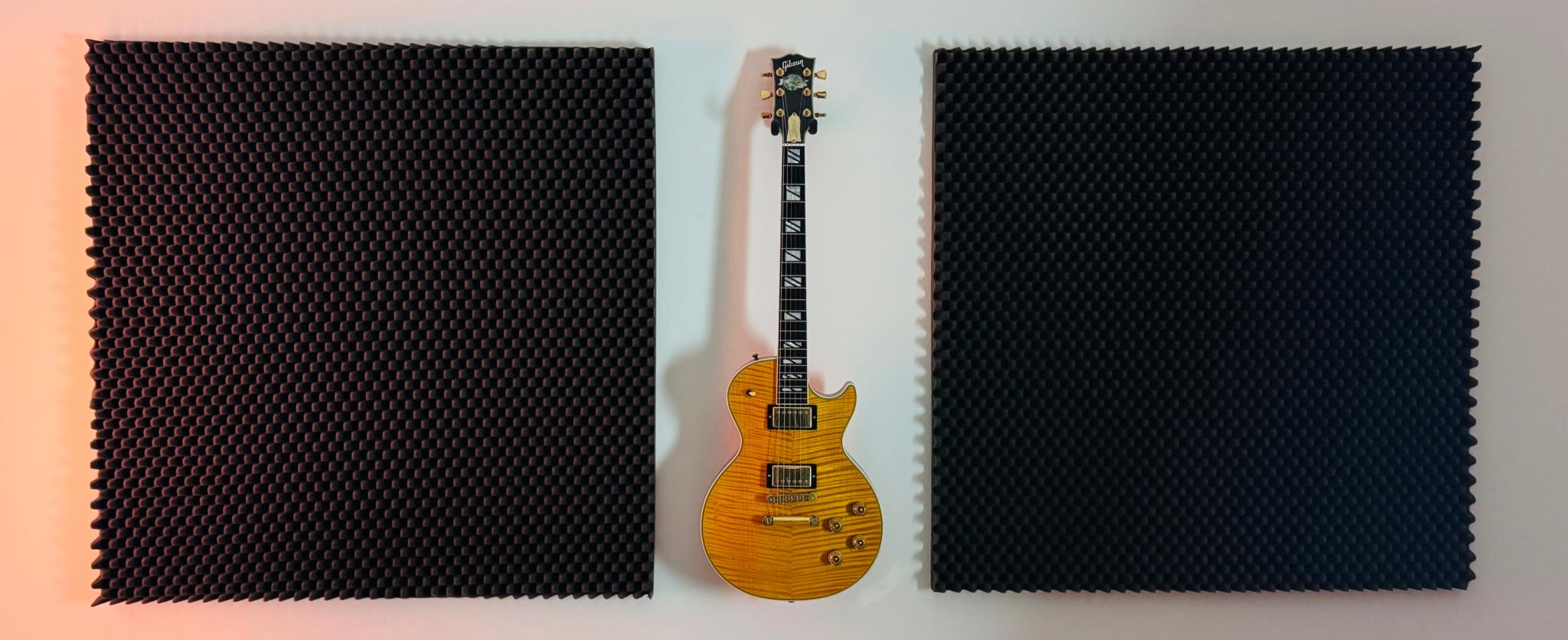
Acoustic Guitars
Acoustic guitars often benefit from a sense of natural immersion, achievable by applying a small or medium room reverb. This approach maintains an intimate performance style while steering clear of an overly dry feel. A chamber-style reverb may impart a smooth decay that complements everything from gentle fingerpicking to more robust strumming patterns. Meanwhile, some damping in the upper frequencies goes a long way in ensuring every note retains its clarity and prevents the reverb from overwhelming the core tonality of the instrument.
Pianos and Keyboards
Pianos and keyboards, particularly in cinematic or ambient tracks, can come alive with the right hall or chamber reverb, infusing each chord or melody with a lush sense of space. For arrangements where a busy mix is a concern—such as pop tracks—opting for a shorter decay time can preserve clarity and avoid washing out the intricate details of the piano’s transients. Adding a dash of pre-delay can further sharpen the attack, letting the bright percussive elements of the piano cut through before the reverb fully blooms.
Strings and Orchestral Instruments
Strings and orchestral instruments, emblematic of grandeur and depth, typically thrive in a hall reverb setting that simulates the resonant environment of concert halls. This approach naturally complements classical or film score contexts, bringing ensembles to life with a sense of air and realism. Combining separate short and long reverbs can help define varying depths and distances for each section of the orchestra, maintaining a full yet unclouded sonic tapestry. As a final step, trimming excessive frequencies in the reverb tail ensures that the mix remains uncluttered, allowing each instrument to maintain its inherent character.
Synths and Pads
Synths and pads are naturally associated with futuristic or ethereal textures, often enhanced by employing reverb as a creative sound design tool rather than merely a spatial effect. Algorithmic reverbs, for instance, permit a great deal of flexibility, allowing you to experiment with modulated or evolving tails that shift over time. Long decay settings deliver a dreamy, floating quality—highly appealing in ambient or chill tracks—though mindful EQ and level management are essential to keep the mix from drifting into muddy territory.
By focusing on the specific needs of each instrument and tailoring the reverb settings accordingly, you create a layered sonic field that feels both polished and authentic. Every note or transient finds its proper place—surrounded by just enough space to shine—without compromising the essential detail that draws listeners into the performance.
What Is the Difference Between ‘Echo’ & ‘Reverb’?
Although both echo and reverb involve reflections of sound, they differ in how these reflections are perceived. Echo is typically heard as a distinct repetition or delay of a sound—like shouting your name in a canyon and hearing it bounce back clearly a moment later. Reverb, on the other hand, is a dense, continuous tail of overlapping reflections. When these reflections become so closely spaced that you can no longer pick out separate repeats, you hear them as one smooth wash rather than discrete echoes.

Echo: Discrete Delays
An echo is straightforward to recognize because there is a perceptible time gap between the original sound and its reflection. You might hear something like a short “tap-tap” if the delay is under a few hundred milliseconds, or a longer “call-and-response” if it’s closer to a second or more. In music production, delay effects intentionally produce these repeats at user-defined time intervals, sometimes synchronized to the track’s tempo.
Reverb: Blended Reflections
Unlike echo, reverb has thousands of tiny reflections merging into one. If you can’t pick out individual repeats but rather hear a single, continuous decay, that’s reverb. Most real-world listening environments naturally produce reverb because of surfaces all around us, although it might be extremely short or subtle in well-damped rooms.
Why This Difference Matters
- Musical Use: Echo (or delay) is often used for rhythmic emphasis or a clear repeat. Reverb is typically used to add depth and space without creating a discrete repetition.
- Mix Clarity: Echo can clutter a mix if the repeats interfere with the timing of the performance. Reverb, if overused, can wash out details but in a different, more haze-like way.
Understanding this distinction ensures you pick the right effect for the sound you want. Sometimes you want a distinct “ping-pong” repetition; other times, you want the smooth tail that reverb provides.
Different Reverbs Types and Their Uses
While modern digital reverbs can blend or invent new spaces, the classic categories remain essential building blocks.
Room
- Simulates: Small to medium-sized rooms, usually with a short to moderate decay.
- Sound Character: Subtle, realistic, provides a quick sense of space.
- Uses: Drums, rhythm guitars, or entire mixes to unify them in a “studio” environment. Good for short ambiences that don’t overpower the mix.
Chamber
- Simulates: An echo chamber—a medium-sized, highly reflective space built in studios.
- Sound Character: Dense, smooth decay that can be warm or bright. Often has a classic, vintage flavor.
- Uses: Ideal for vocals, piano, orchestral instruments. Provides a lush but controlled ambiance.
Hall
- Simulates: Large concert halls or auditoriums.
- Sound Character: Lush, expansive, with longer decay (often 1.5–3+ seconds).
- Uses: Orchestral pieces, cinematic music, big ballads, or ethereal pads. Conveys grandness and depth.
Plate
- Simulates: A metal plate (physical or digitally modeled).
- Sound Character: Bright, smooth, with immediate onset and a thick tail. No sense of a 3D space—more of a flat, rich sustain.
- Uses: Vocals (adds a classic shine), snare drums, lead guitars. A staple in rock, pop, and soul for that signature “studio sheen.”
Spring
- Simulates: Metal springs in a reverb tank (commonly found in guitar amps).
- Sound Character: Metallic, twangy, “boingy.” Often has a midrange emphasis and limited high frequencies.
- Uses: Electric guitars (surf rock, reggae, country), organ, or as a lo-fi or retro effect. Adds an unmistakable vintage vibe.
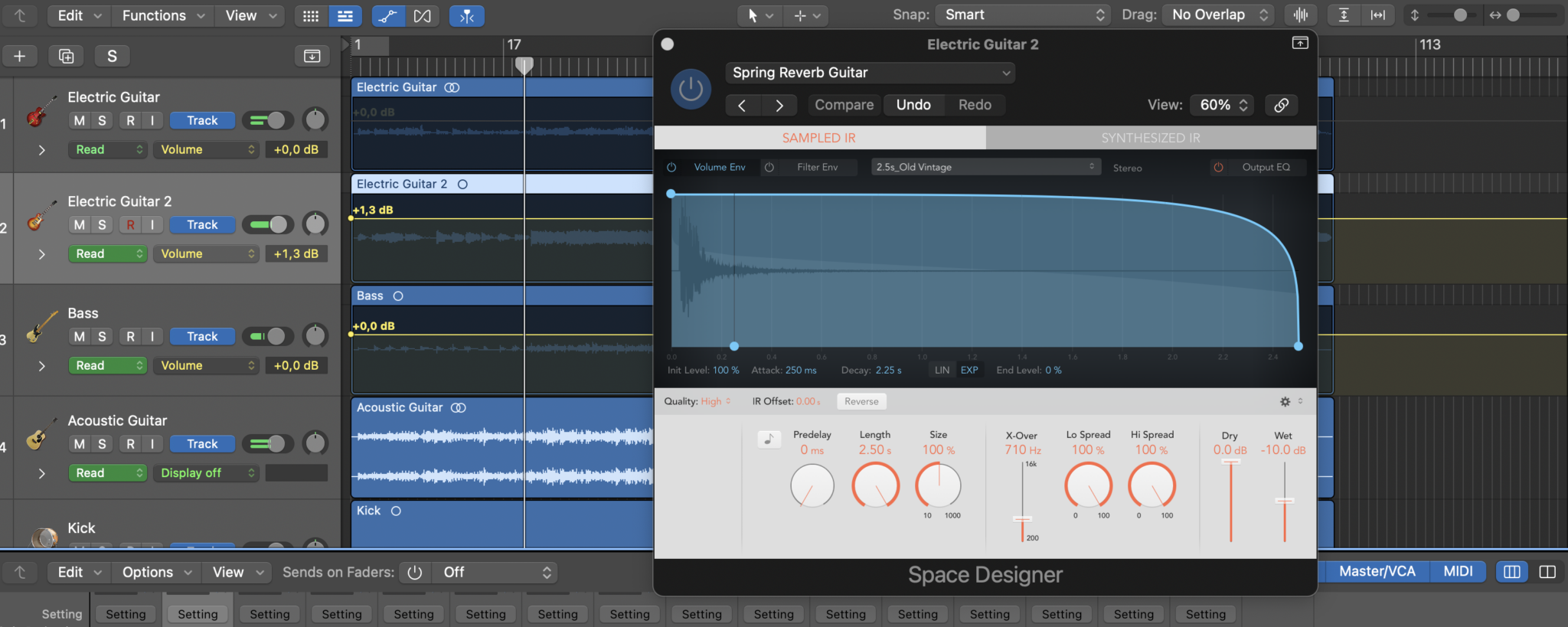
Convolution vs. Algorithmic Reverb
In music production, convolution reverb and algorithmic reverb represent two primary ways to generate artificial reverberation, each with its own strengths and creative possibilities. Understanding their differences helps you choose the right approach for a given track or workflow.
Convolution Reverb
Convolution reverb relies on an impulse response (IR)—an audio snapshot of a real acoustic space or device. The reverb plug-in uses this IR to recreate that unique sonic signature for any incoming signal.
- Realism: Convolution excels at authenticity because it’s derived from actual measurements of rooms, halls, or even classic hardware units.
- Consistency: Once you load an impulse response, it consistently reproduces that specific space, making it easy to match multiple tracks or sessions.
- Limitations: Editing the character of a convolution reverb beyond basic controls (e.g., EQ, length stretching) can be more restrictive compared to algorithmic reverbs.
Because it captures the true ambience of a recorded space, convolution reverb is ideal for film scoring, orchestral works, or whenever you want a natural, realistic environment. However, it can be CPU-intensive with larger IR files, and creative manipulation may be somewhat limited.
Algorithmic Reverb
Algorithmic reverb uses mathematical models to generate reverberation, simulating how sound might behave in various virtual spaces.
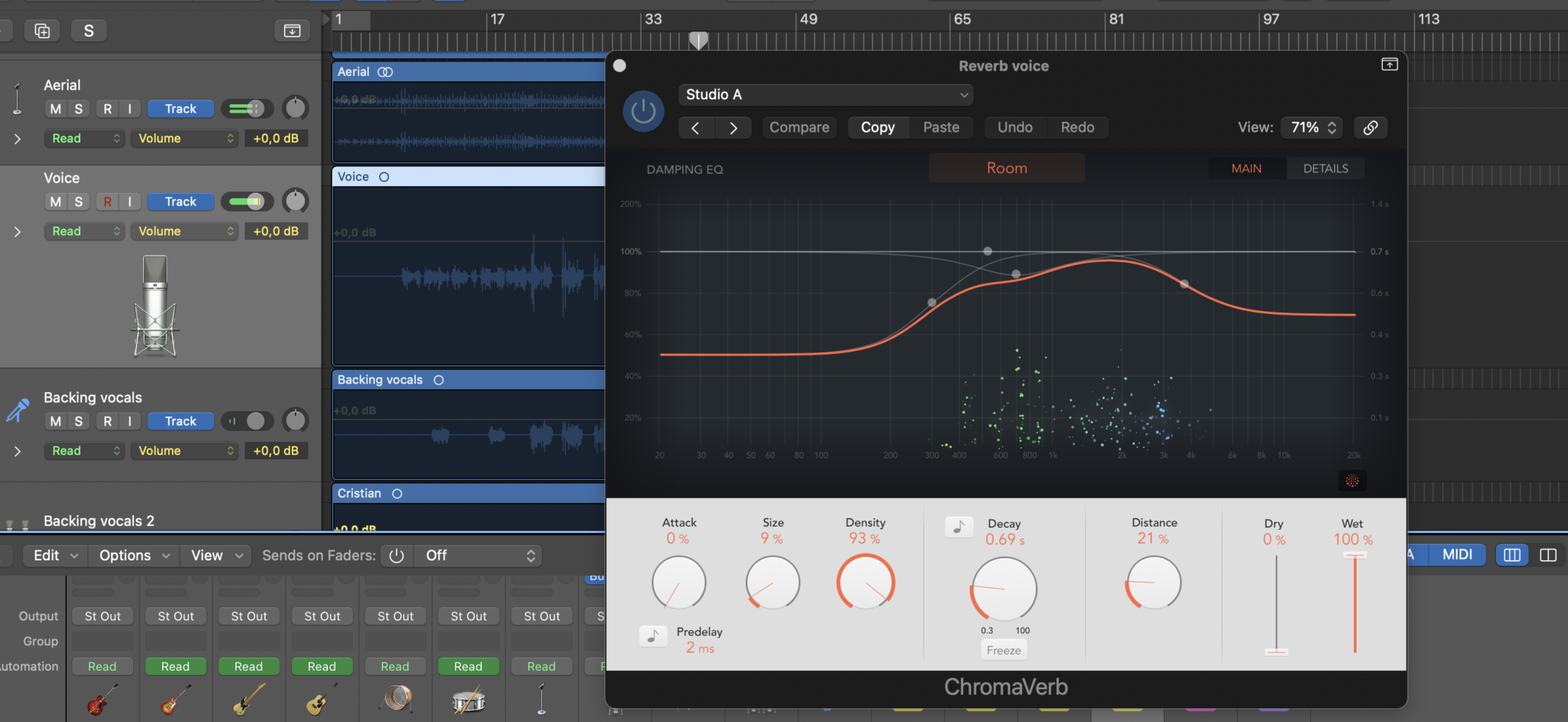
- Flexibility: Algorithmic reverbs often have extensive parameters—such as diffusion, modulation, early/late reflections—that let you sculpt or exaggerate spaces far beyond real-world physics.
- Efficiency: Many algorithmic reverb plugins are designed for lighter CPU usage, especially if you reduce complexity in the settings.
- Varied Character: You can create everything from lush, otherworldly tails to tight, punchy rooms by tweaking algorithmic controls, making it highly versatile for diverse musical styles.
This type of reverb excels in modern electronic, pop, or sound design contexts, where evolving or unreal spaces are desired. Its depth of customization also suits producers who want to fine-tune the reverb tail for each track’s unique qualities.
Putting It All Together
When deciding how to use reverb in a mix, consider why you’re adding it and what you want to achieve. Here’s a concise workflow:
- Identify the role: Are you aiming for natural realism, adding subtle space, or going for a dramatic effect?
- Choose a reverb type: Room, chamber, hall, plate, or spring based on the desired color and sense of space.
- Set decay time: Match it to the track’s tempo and style. Short for faster, denser sections; long for sparse, emotional passages.
- Apply pre-delay: Use enough so that the original sound remains clear.
- Shape tone: EQ or dampen the reverb tail to avoid muddiness or excessive brightness.
- Balance levels: Add enough wet signal to be felt but not overshadow the mix. Automate if needed for dramatic shifts.
- Experiment and refine: Try layering short and long reverbs, applying sidechain compression, or exploring advanced effects like reverse, gated, or modulated tails.
Conclusion
Reflections in a space are integral to how we perceive sound both in everyday life and in recorded material. Their ability to introduce a sense of space, depth, and emotional richness makes Reverb a cornerstone of audio production. By understanding this phenomenon, distinguishing it from echo, and recognizing how natural or artificial reflections influence a performance’s sonic character, you can transform raw recordings into cohesive, immersive mixes.
In essence, Reverb arises from the cumulative decay of energy within a space, blending into a continuous tail that differs from echo’s discrete repeats. It can range from a light ambient layer that softly fills the background to a dense, enveloping wash that defines the entire soundscape. By injecting depth, distance, and tonal complexity, these spatial qualities create a more engaging environment. Through careful type selection, parameter adjustments, and creative artistry, the listener’s experience can be elevated to a profound level.
With a firm grasp of the basics and a willingness to explore, you can wield Reverb as both a subtle enhancer and a dramatic statement, guaranteeing every track you mix achieves the ideal balance of dimensionality and emotional impact.
O autorovi

Néstor Rausell
Zpěvák, hudebník a specialista na content marketingNéstor Rausell je hlavní zpěvák rockové kapely „Néstor Rausell y Los Impostores“. V MasteringBOX pracuje jako marketingový specialista.
Přidat komentář
Přihlas se a pak můžeš komentovat

